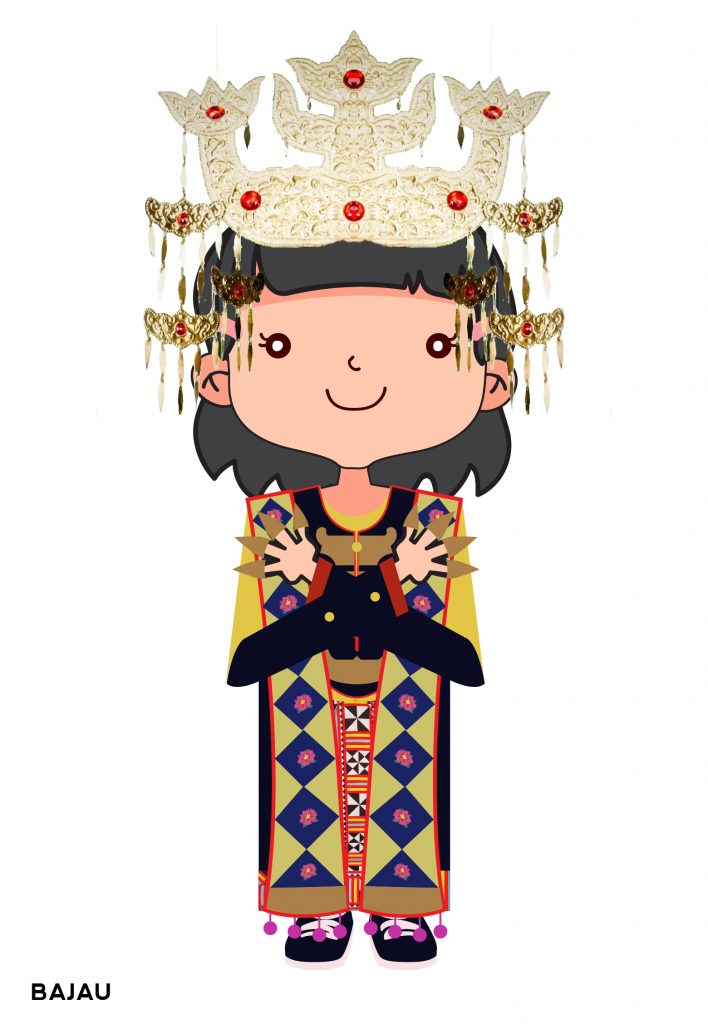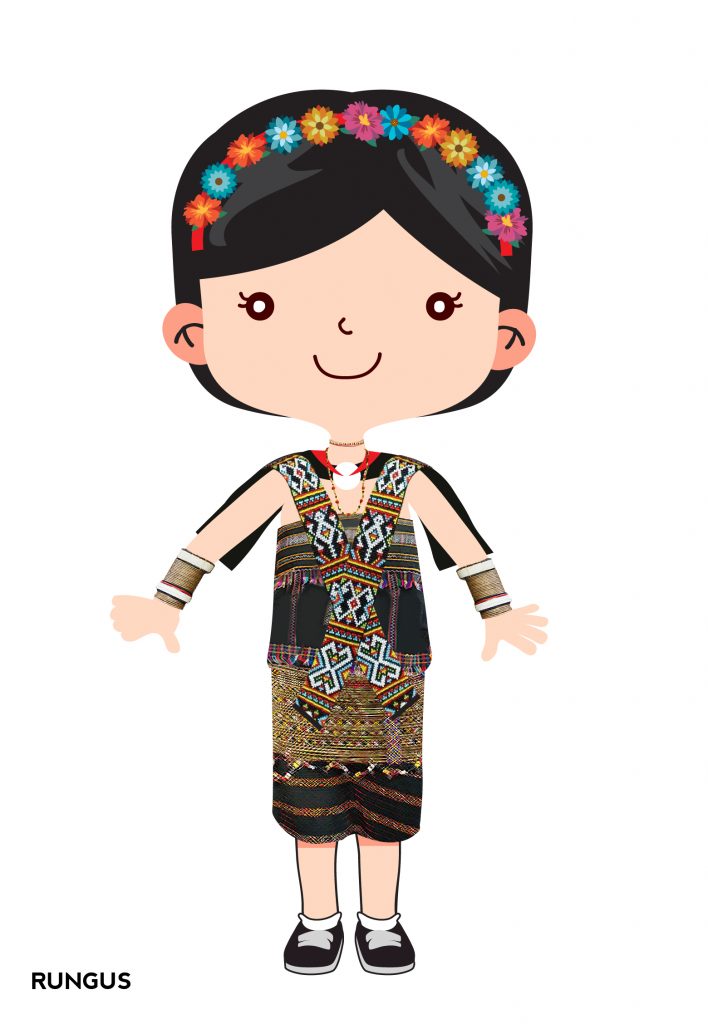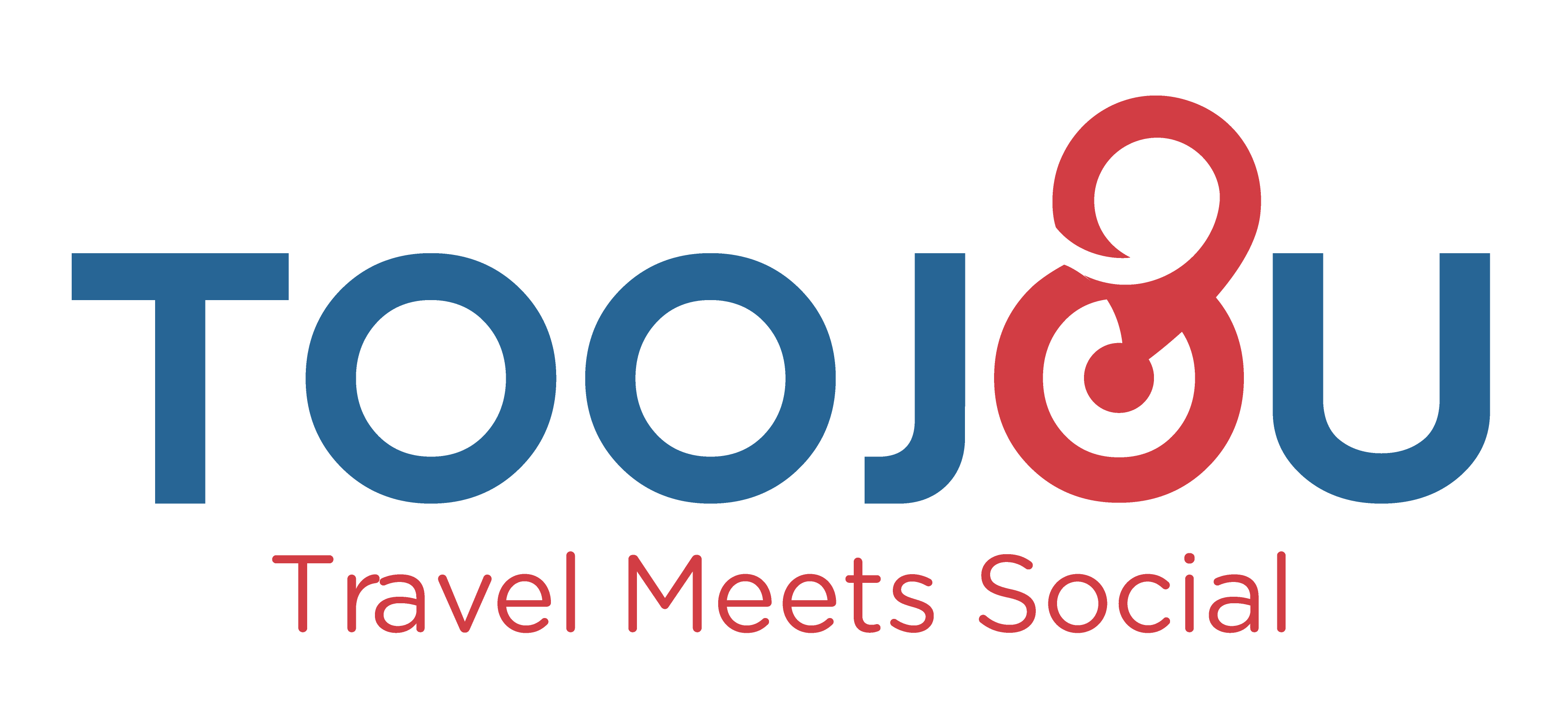
Murut
Perhaps the most feared tribe on the list, the Murut tribe were the last tribe to renounce headhunting practices. This was to instil fear amongst the other tribes as back in the days it was important to display ferociousness to avoid invasion by other tribes. Skulls of their slain enemies were displayed at the entrance of the village to deter other tribes member from entering.
Besides deterring the enemies, the skulls were used to display their masculinity. It was important for a Murut man to have as many skulls as possible to protect his reputation. A Murut woman will select her mate based on the number of skulls presented to her family in order to get their blessings. After the British colonisation, many of the local tribes converted to Christianity. An anti head hunting legislation was passed which banned the practice.
姆律
族姆律族也许是名单上最可怕的部落,他们是最后一群放弃猎头的部落。而猎头行为其实是为了展示雄霸以及喝止其他人入侵他们的土地。多年以前,姆律族为了避免其他部落的入侵,他们会将被杀的敌人的头骨展示在村庄的入口处,以视警告且阻止入侵者。
猎头除了威慑敌人,头骨还被用来显示他们的男子气概。对于一个姆律人来说,拥有尽可能多的头骨就相等于英雄名声越响亮,所以姆律男子视猎头为一种成功的象征。而姆律女性会根据男子拥有的头骨数量来选择成为伴侣。但在英国殖民后,许多当地部落改信基督教,反猎头的立法通过也禁止了这种行为。

Kadazan Dusun
The most important festive celebration in Kota Kinabalu is the Kaamatan Festival or Harvest Festival celebrated by the Kadazan Dusun. Kadazan Dusun is the combination of two tribes, Kadazan tribe and Dusun tribe. They believe in honouring Huminodun, the spirit of a maiden who sacrificed herself in order to give the bountiful harvest.
Kaamatan falls in May, and even though only the last two days of the month are holidays, the people of Sabah celebrate it throughout the entire month. In this festival, a beauty pageant for native girls known as Unduk Ngadau is held to commemorate the spirit of Huminodun. It is the most important beauty pageant in the state of Sabah. The Kadazan Dusun tribe is the largest tribe in the whole of Sabah and is the most common ethnicity here. Majority of them are Christians but there’s a growing number of Muslim Kadazan in the recent years.
卡达山杜顺族
卡达山杜顺族其实是两个种族的结合,而在沙巴当地与卡达山杜顺族相关的传统节日为Kaamatan丰收节。这个节日是为了纪念稻神之女Huminodun为人民的牺牲。
丰收节都会落在每年的五月下旬,但沙巴人民都会把整个五月份都视为节庆月份。而在这期间,就会有大型活动,像是:当地选美比赛,召集各个部落少女来竞选。卡达山杜顺族也是沙巴最为广大的族群,他们主要信奉基督教但也有一部分是信奉伊斯兰教。

Lundayeh
Unlike most other tribes in Sabah who relied heavily on farming, the Lundayeh people were also hunters and fishermen. They were known to be heavy drinkers and lived unhealthily. Majority of them neglected their health and were susceptible to diseases. A smallpox outbreak in between 1904 and 1905 almost wiped out the entire population of Lundayeh from 20,000 to 3000. It was one of the largest death tolls caused by a viral epidemic. Due to this dark history, many Lundayehs still consider it a taboo to talk about this history.
伦达耶
与沙巴州其他大多数的部落不同,伦达耶人是非常依赖农业的民族,他们也是猎人和渔民。他们以酗酒和不健康的生活方式而闻名。1904年至1905年就因伦达耶人的生活方式而爆发病,也在当年几乎人口从20000人消灭到3000人。而这段黑暗的历史,也让伦达耶人有所警惕,逐渐改善生活方式。

Bajau
The Bajau people are famously known as sea gypsies because they live on water and rarely step foot on land. Semporna has the largest number of Bajau people in Sabah. What makes their culture so fascinating is that they live above the sea in stilt houses. Naturally, they live off the sea which has help them to develop exceptional diving skills. Many sea gypsies claim to have the ability to hold their breath underwater for more than 5 minutes. On top of that, they are adept at spearfishing. In order to keep cool, these sea gypsies slather mud or seaweed on their faces.
In recent years, tourism in Semporna boomed and tourists flock there to get a glimpse of the Sea gypsies. As a result, the sea gypsies started going on land frequently to sell their catch to the tourists for a lower price than the market. By doing this, many sea gypsies are able to improve the quality of their life.
巴瑶族
巴瑶人以海上吉普赛人而闻名,因为他们在水上生活且很少踏上陆地。而在沙巴的仙本那地区拥有最多巴瑶人。他们的文化迷人,是因为他们住在海上的吊脚楼里,仿佛像是乌托邦一样那么和谐那么美丽。由于从小以海为家,也让它们发展出非凡的潜水技能。许多海洋吉普赛人声称他们有能力在水下憋气超过5分钟。最重要的是,他们擅长用鱼叉捕鱼。为了保持凉爽,这些海吉普赛人在脸上涂上厚厚的海泥泥或海藻。
而近年来,仙本那的旅游业蓬勃发展,游客蜂拥而至,只为一睹海中吉普赛人的风采。因此,海上吉卜赛人开始频繁地登上陆地,以低于市场的价格向游客出售他们的捕获物。通过这样做,许多海吉普赛人都改善了他们的生活质量。

Rungus
In the older days, Rungus was a subgroup of the Kadaza ethnic but they have since renounced their ties with Kadazan tribe. They are most well known for living in a longhouse with as many as 70 families residing in one, with each family taking up one room. Nowadays modern longhouses do not house more than 10 families. Mostly found in the northern part of Sabah, their culture revolves heavily around rice.
Like the other ethnic tribes in Sabah, Rungus are superstitious and believe in witchcraft. A Bobolizan is a witch doctor with the ability to communicate with the dead. The Rungus people believe that a Bobolizan has the ability to cure illnesses and bring prosperity through spiritual rituals. Nowadays many Rungus people have assimilated into modern society and renounced their spiritual beliefs.
龙古斯
龙古斯族原属杜顺语系的族系分支之一。龙古斯镇主要分布在古达省内的森林平原也是最大的族群之一。如同其他卡达山杜顺族,龙古斯族也在山林里过着农耕狩猎,物物交换的生活。过去,他们为了捍卫领土和族人,也进行猎头行为。而今,猎头文化已不存在。他们走出森林,接受文明洗礼。龙古斯族可说是北婆罗洲保留其传统文化和习俗最为完好的民族之一,他们的传统长屋,彩珠和编制文化在当地组织,文化民俗艺术组织和旅游团体的推动和发展下,成为了沙巴的一大特色。
据记载,龙古斯是迷信巫术的族群。他们相信先人有着与死灵沟通的能力,透过咒语治病。但如今 ,许多 人已经融入社会,不再深信巫术之说了。




